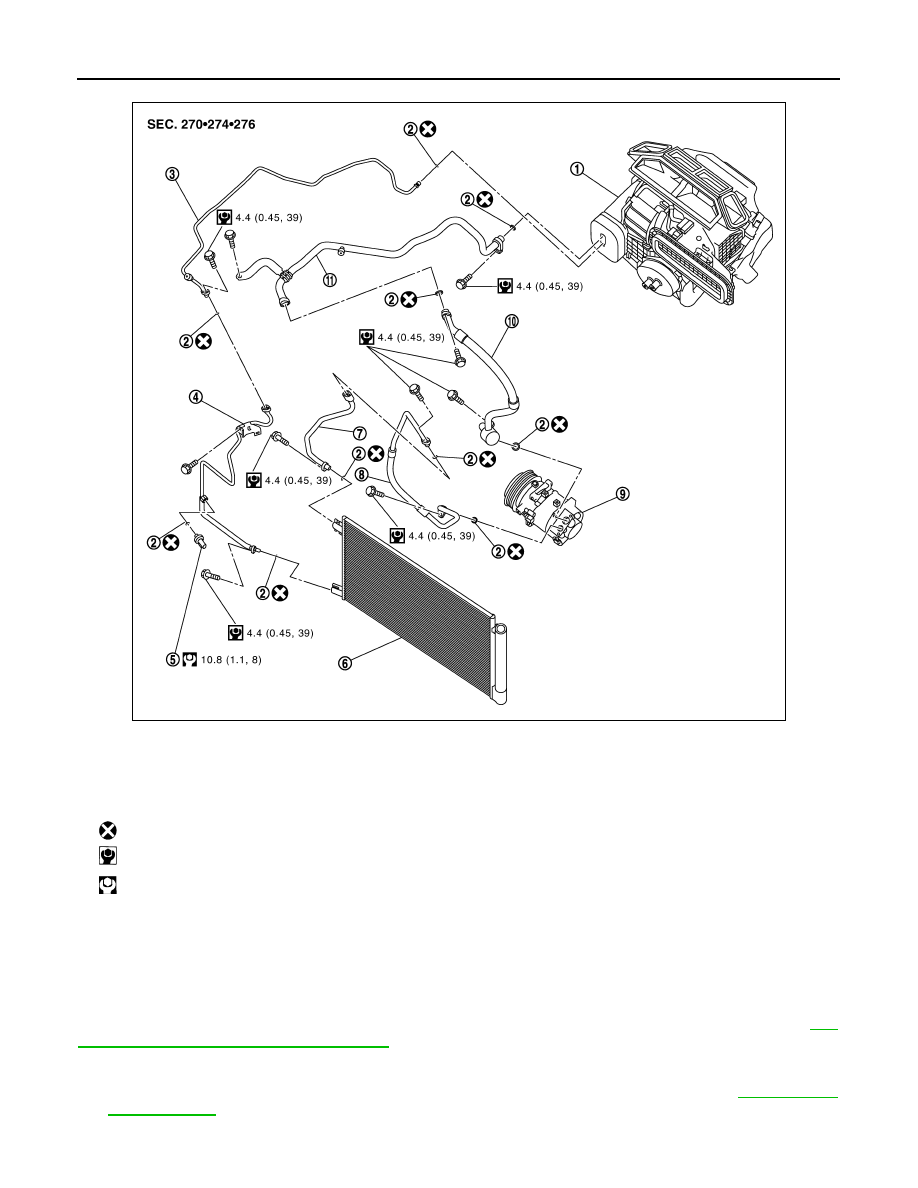Content .. 1085 1086 1087 1088 ..
Nissan Qashqai J11. Manual - part 1087

HA-174
< REMOVAL AND INSTALLATION >
[TYPE 4]
COOLER PIPE AND HOSE
R9M engine models
HIGH-PRESSURE FLEXIBLE HOSE
HIGH-PRESSURE FLEXIBLE HOSE : Removal and Installation
INFOID:0000000010707894
CAUTION:
Perform lubricant return operation before each refrigeration system disassembly. However, if a large
amount of refrigerant or lubricant is detected, never perform lubricant return operation. Refer to
67, "Perform Lubricant Return Operation"
REMOVAL
1.
Use a refrigerant collecting equipment (for HFC-134a) to discharge the refrigerant. Refer to
2.
Remove mounting bolt, and then disconnect high-pressure flexible hose from the high-pressure pipe 2.
JMIIA3632GB
1.
A/C unit assembly
2.
O-ring
3.
High-pressure pipe 3
4.
High-pressure pipe 1
5.
Refrigerant pressure sensor
6.
Condenser & liquid tank assembly
7.
High-pressure pipe 2
8.
High-pressure flexible hose
9.
Compressor
10. Low-pressure flexible hose
11.
Low-pressure pipe
: Always replace after every disassembly.
: N·m (kg-m, in-lb)
: N·m (kg-m, ft-lb)